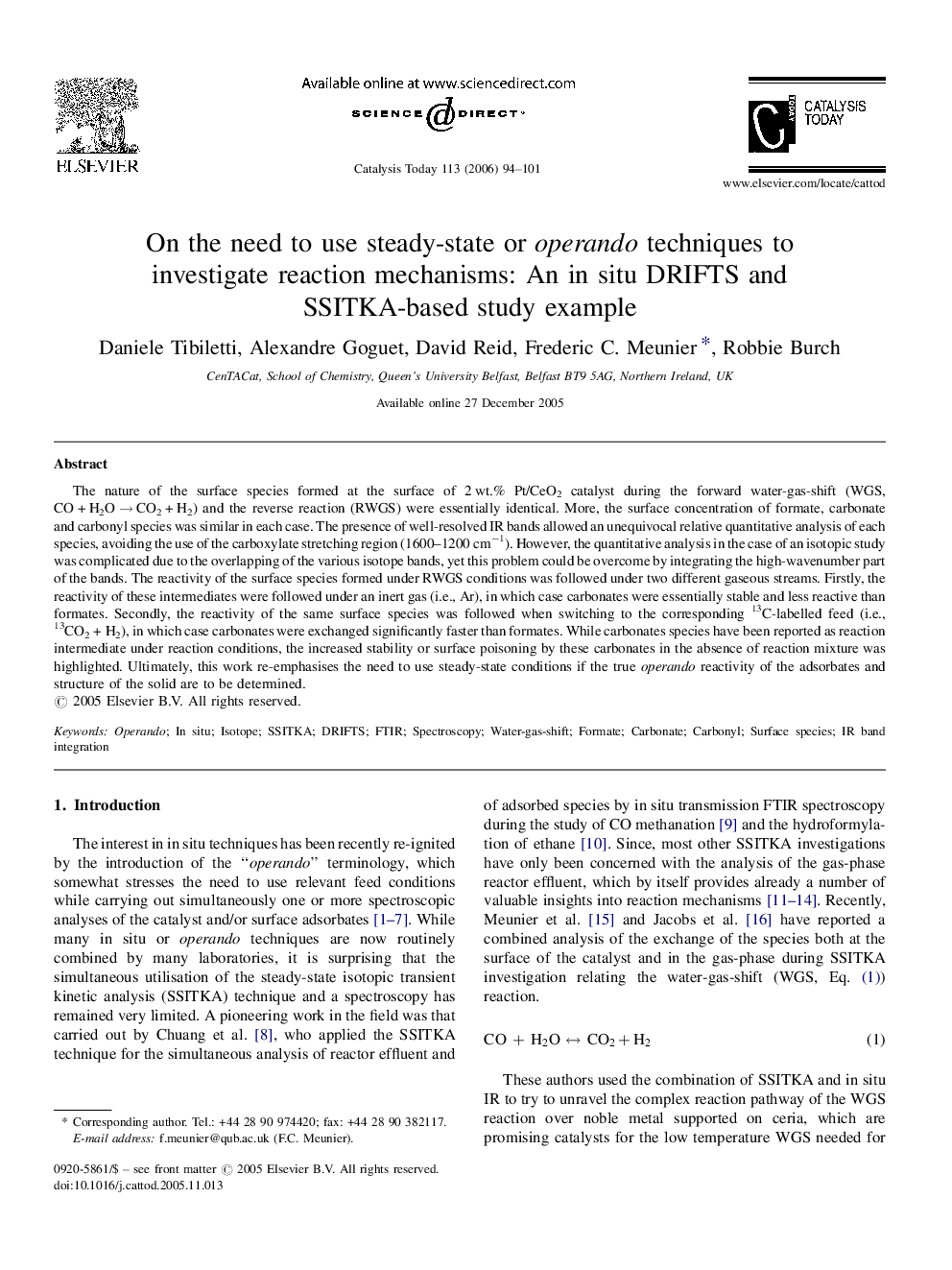| Article ID | Journal | Published Year | Pages | File Type |
|---|---|---|---|---|
| 58780 | Catalysis Today | 2006 | 8 Pages |
The nature of the surface species formed at the surface of 2 wt.% Pt/CeO2 catalyst during the forward water-gas-shift (WGS, CO + H2O → CO2 + H2) and the reverse reaction (RWGS) were essentially identical. More, the surface concentration of formate, carbonate and carbonyl species was similar in each case. The presence of well-resolved IR bands allowed an unequivocal relative quantitative analysis of each species, avoiding the use of the carboxylate stretching region (1600–1200 cm−1). However, the quantitative analysis in the case of an isotopic study was complicated due to the overlapping of the various isotope bands, yet this problem could be overcome by integrating the high-wavenumber part of the bands. The reactivity of the surface species formed under RWGS conditions was followed under two different gaseous streams. Firstly, the reactivity of these intermediates were followed under an inert gas (i.e., Ar), in which case carbonates were essentially stable and less reactive than formates. Secondly, the reactivity of the same surface species was followed when switching to the corresponding 13C-labelled feed (i.e., 13CO2 + H2), in which case carbonates were exchanged significantly faster than formates. While carbonates species have been reported as reaction intermediate under reaction conditions, the increased stability or surface poisoning by these carbonates in the absence of reaction mixture was highlighted. Ultimately, this work re-emphasises the need to use steady-state conditions if the true operando reactivity of the adsorbates and structure of the solid are to be determined.
